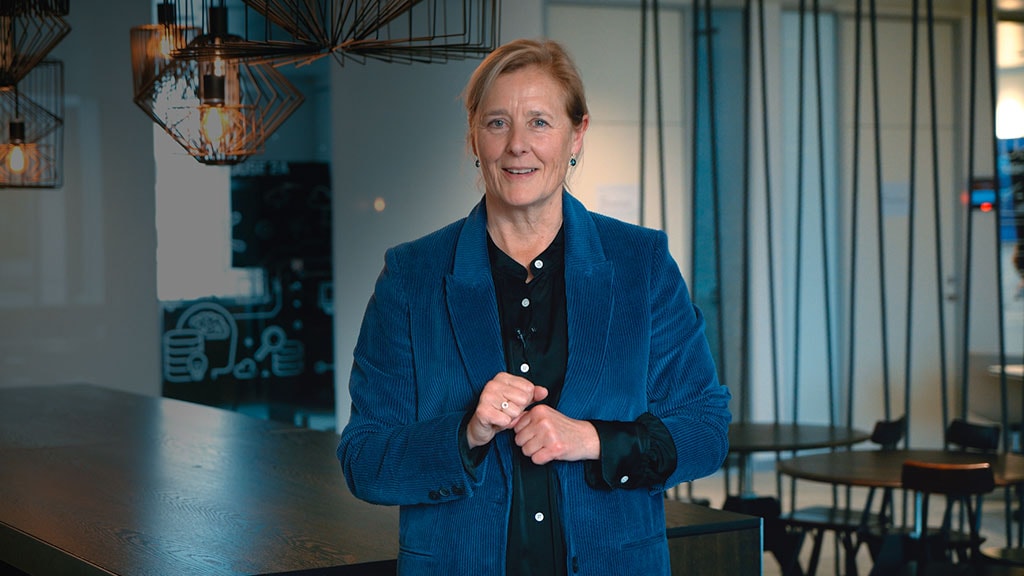The Logistics Trend Map has been created by Maersk, in collaboration with Statista, to act as a comprehensive and interactive guide to the most impactful trends in logistics today. Combining robust data with first-hand perspectives from industry decision makers, The Logistics Trend Map offers actionable insights on how to leverage trends to solve problems, while unlocking new opportunities for growth.
“In an increasingly complex and challenging world, staying ahead in logistics has never been more critical. The question is no longer whether companies will face disruption in their supply chains, but how they can constantly and effectively navigate them. Identifying and analysing trends therefore enables businesses to stay competitive in a dynamic industry,” Karsten Kildahl Chief Commercial Officer (CCO) at Maersk says.
Leading the way with the top global logistics trends of 2025
The Logistics Trend Map identifies the relevance of trends in the logistics industry and assesses their implementation progress within organisations. The insights are delivered in two ways:
- An interactive map, which lists the top 30 trends, measured by impact and adoption.
- A free downloadable PDF report (70 pages) which delves into the top 10 trends, analysed across 5 regions and 8 industries. The report also includes challenges and opportunities, customer portraits and the next emerging trends in the industry.
Among the 30 trends identified, below are the top 10. Click to explore more:
- Supply Chain Visibility
- Internet of Things
- Supply Chain Diversification
- Financial Resilience in Logistics
- Digital Transformation
- Cyber Security
- Last Mile Delivery Innovations
- E-Commerce
- Circular Economy
- Artificial Intelligence
For even more insights, download the full report here
Research based on over 500+ interviews
Statista conducted a quantitative survey in Q4 2024, with logistics decision makers across eight key industries: retail, fashion & lifestyle, technology, automotive, chemicals, pharmaceuticals & healthcare, fast-moving consumer goods (FMCG), and perishables. The survey was primarily aimed at understanding how customers rank the trends, how far their companies have progressed in implementing each trend and the urgency of adoption they seek from their logistics partners to adopt the trends.
The survey was also used to explore the hurdles faced by companies and the opportunities they recognise. Overall, 570 interviews were conducted across Asia Pacific, Europe, Latin America, North America and Mexico, the Middle East and Africa. Respondents came primarily from mid-sized and large organisations transporting at least 100 forty-foot equivalent units annually and spending a minimum of USD 750,000 on logistics.
Research based on data-driven insights
The findings are based on robust data, academic expertise, and deep industry knowledge. To identify the trends, Statista used advanced AI-driven analytics to explore scientific studies, patents, earnings calls, and startup activities.
With the objective of not only identifying the most important trends but also positioning them on The Logistics Trend Map, the collected data was assessed to determine the relevance and level of industry adoption of each trend. Through the survey, Statista gathered information on how far companies have progressed in implementing each trend.
To complement these findings, Statista used AI-based big data analytics to create indices and compare key patterns to determine the level of impact and adoption of each trend. To project the impact of a trend, data was used to understand how much disruption it could cause in companies. For example, evidence includes whether innovations in patents are categorised as incremental, moderate, or groundbreaking. A higher share of groundbreaking patents often indicates greater disruptive potential and therefore a higher impact on the industry.
Supply chain innovations
Reliable and actionable insights are key to The Logistics Trend Map. That’s why, alongside advanced data science techniques, Statista data analysts applied thorough quality controls at every step of the process. All findings were validated through interviews with industry experts and discussed with supply chain decision makers to bring the trends to life.
Disclaimer: The content of The Logistics Trend Map is intended for informational purposes only and does not reflect the views, opinions, or official stance of A.P Moller-Maersk A/S. Any conclusions or interpretations expressed in this report are those of the author(s) and do not necessarily represent the perspectives or policies of A.P Moller-Maersk A/S.
Be ready with the top logistics trends to go all the way! Discover more Logistics Insights and explore the rest of the 2025 trends in the same space.
How can you make your logistics interconnected?
Reduce complexity with an all-in-one solution where your business only has to deal with one partner to service all your supply chain needs from start to finish.
Learn more about how Maersk can help with integrated logistics.
未来,您想随时了解必读行业趋势吗?
您已经完成了,欢迎“登船”!
很抱歉,发送您的联系请求时出现问题。
请查看表单字段,确保所有已正确填写所有必填信息。如果问题仍然存在,请联系我们的支持团队以获得进一步的帮助。
未来,您想随时了解必读行业趋势吗?
使用此表格注册,即可直接在您的邮箱中接收我们的洞察见解,进入一个真正的综合物流世界。简单操作,即从我们为您量身定做的精选文章中获得启发,了解相关行业洞察信息。您可以随时取消订阅。
I agree to receive logistics related news and marketing updates by email, phone, messaging services (e.g. WhatsApp) and other digital platforms, including but not limited to social media (e.g., LinkedIn) from A. P. Moller-Maersk and its affiliated companies (see latest company overview). I understand that I can opt out of such Maersk communications at any time by clicking the unsubscribe link. To see how we use your personal data, please read our Privacy Notification.
By completing this form, you confirm that you agree to the use of your personal data by Maersk as described in our Privacy Notification.














